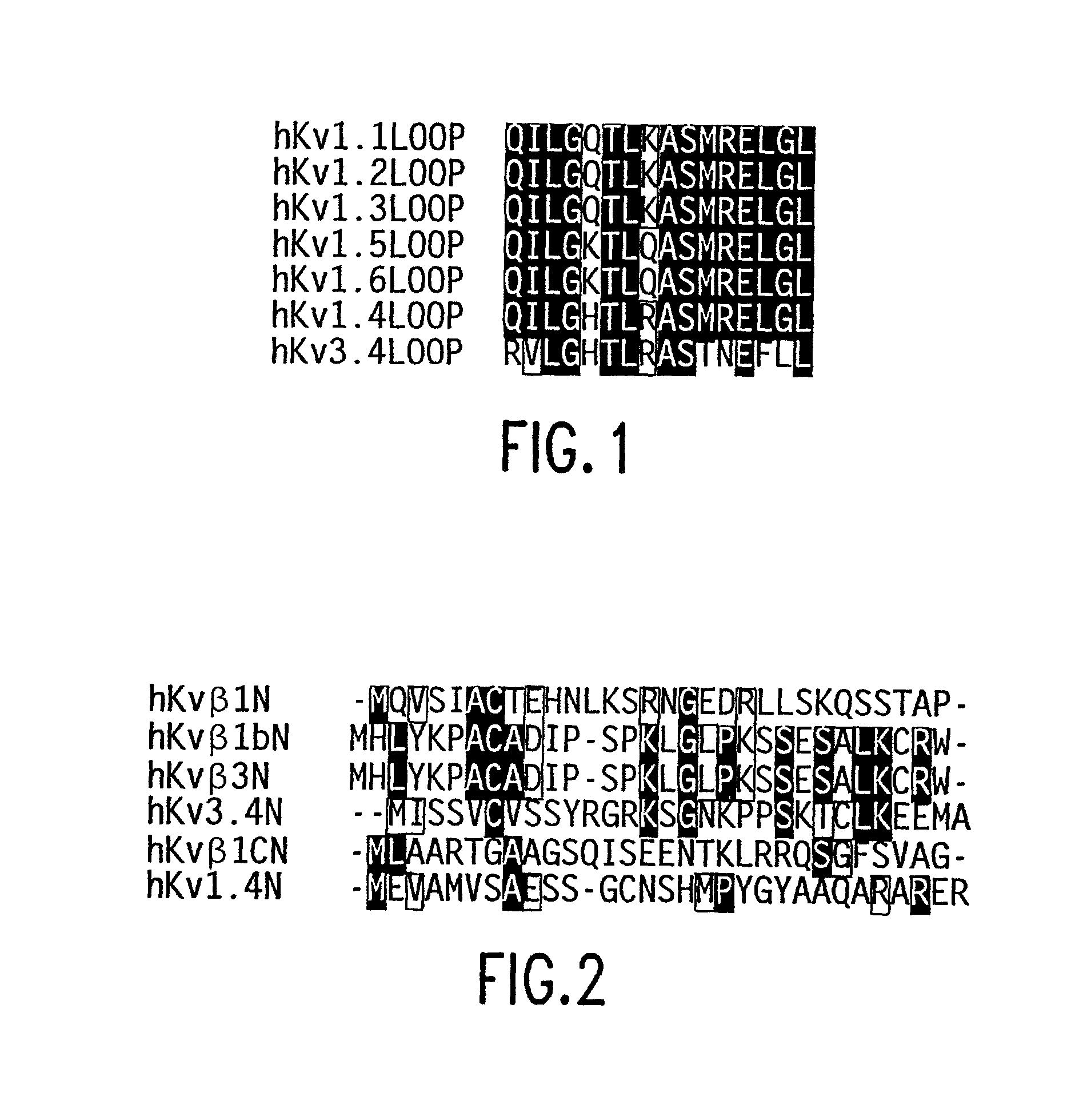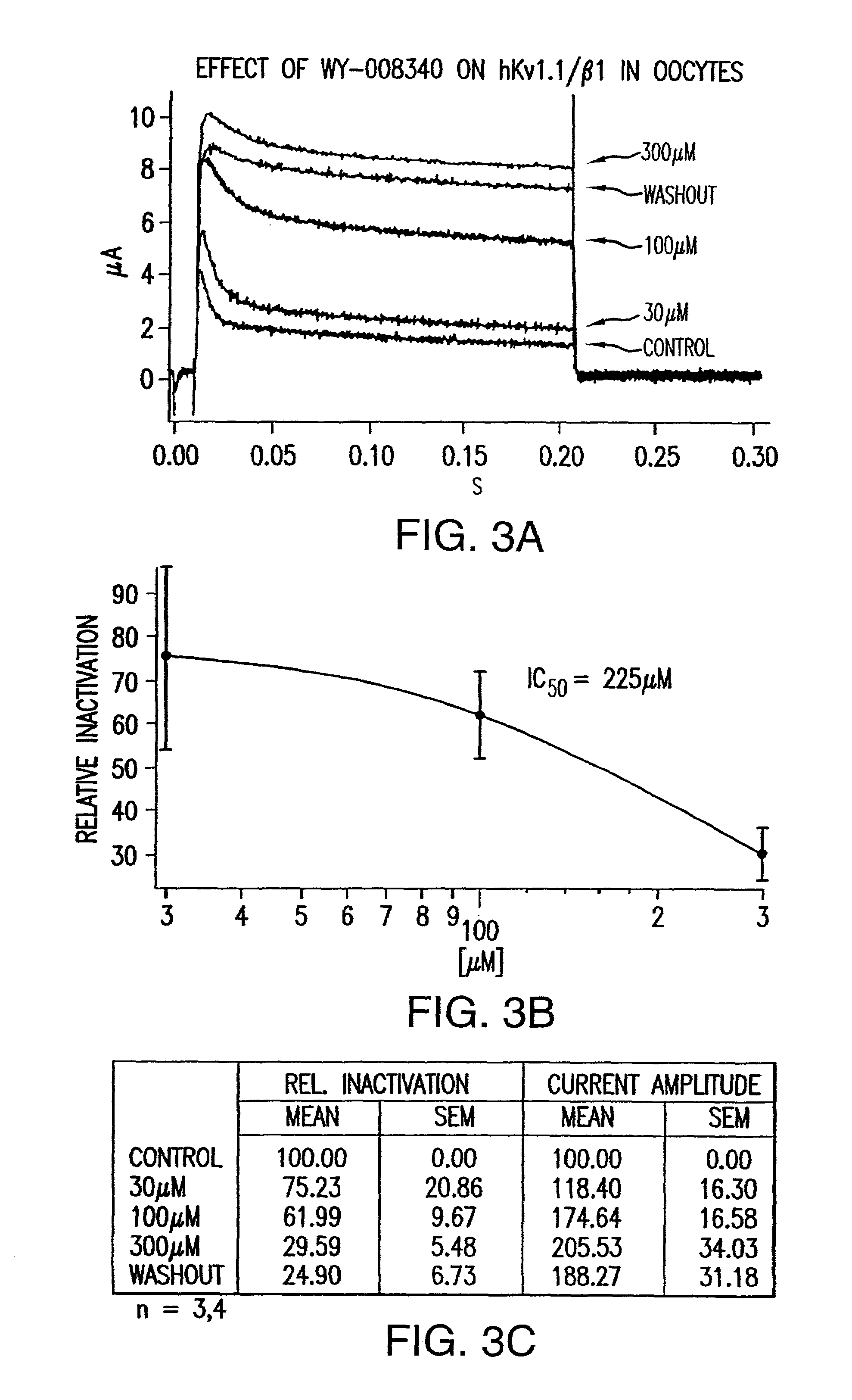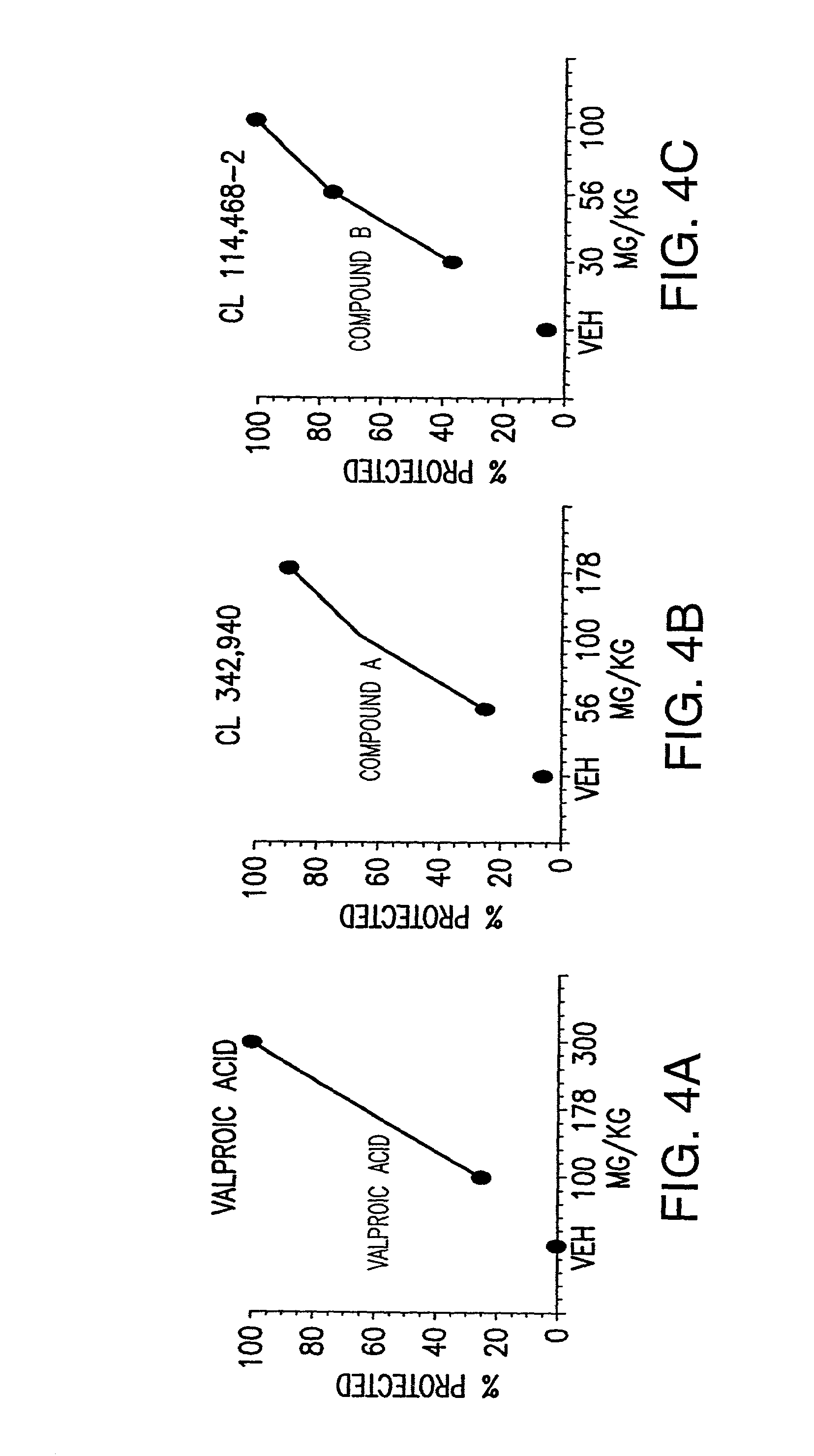Methods for identifying modulators of N-type ion channel inactivation
a technology of ion channel inactivation and modulator, which is applied in the field of methods for identifying modulators of n-type ion channel inactivation, can solve the problems of limited application of this technique, preventing or restricting its practical application, and not being suitable for mass screening of compounds, etc., to facilitate functional or binding interactions, significant modulatory effects on ion channel activity, and treatment and/or preventing
- Summary
- Abstract
- Description
- Claims
- Application Information
AI Technical Summary
Benefits of technology
Problems solved by technology
Method used
Image
Examples
example 1
Construction of Recombinant Plasmids
[0064]Molecular Reagents
[0065]Generation of recombinant plasmids employed standard molecular techniques. Oligonucleotides are prepared on an ABI automated synthesizer (Perkin Elmer Cetus, Norwalk, Conn.). Polymerase chain reactions (PCR) employ standard techniques (Finney M., Current Protocols in Molecular Biology, Wiley & Sons, NY, 1993). In general, PCR products are cloned into pCRII (Invitrogen, Carlsbad, Calif. 92008) as an interim step for PCR product sequence confirmation and propagation for further cloning. The pCRII recombinant plasmids are transfected into OneShot competent E. coli cells (Invitrogen, Carlsbad, Calif. 92008), and other recombinant plasmids were transfected into DH5α competent E. coli cells (GIBCO Life Technologies, Rockville, Md. 20849), following manufacturer's instructions. Recombinant plasmid stocks are prepared using Qiagen Mini preps (Qiagen, Valencia, Calif.). DNA sequencing is performed using di-deoxy terminator rea...
example 2
Construction of Yeast Strains
A. Generation of Kv1.1 / Kvβ1 Yeast Strains:
[0078]All strains are generated by transforming expression plasmids into CY770 (Ozenberger and Young, 1995, supra) using the lithium chloride method and grown on synthetic drop-out media to maintain plasmids (Rose, M. D., et al., Methods in Yeast Genetics, Cold Spring Harbor Laboratory Press, Cold Spring Harbor, N.Y., 1990). 3-amino-1,2,4-triazole is used to counteract background expression of the GALUAS-HIS3 reporter. All strains will contain a UASGAL-CYH2 reporter plasmids with the following combination of plasmids:[0079]S45-pUN30AS and β1-pUN100ACT (strain YKY4 / Kv1.1)[0080]S45-pUN30AS and pUN100ACT (strain YKY15 / Kv1.1)[0081]pUN30AS and β1-pUN100ACT (strain YKY16 / Kv1.1)[0082]SNF1-pAS1 and SNF4-pACT (strain CY856)[0083]S45-pUN30AS and SNF4-pACT (strain YKY2 / Kv1.1)[0084]SNF1-pAS and β1-pUN100ACT (strain YKY5 / Kv1.1)[0085]pUN30AS and β1 1–100-pUN100ACT (strain YKY17 / Kv1.1)[0086]S45-pUN30AS and pUN100ACT (strain YKY...
example 3
Yeast Two-hybrid Screen
A. Kv1.1 / β1 Yeast Two-hybrid Screen:
[0093]The interacting components of the human Kv1.1 channel and Kvβ1 are expressed as fusion proteins to the DNA binding domain or the activation domain, respectively, of the yeast Gal4 transcription activation protein. The expression plasmids are transfected into a host strain which contains a counter selection reporter gene. Functional interaction of the Kv1.1 and Kvβ1 domains will reconstitute the function of the yeast Gal4 protein, drive expression of the downstream reporter gene and result in attenuation of yeast cell growth on selective media. Disruption, or blocking, of the interaction between Kv1.1 and Kvβ1 fusion proteins, will prevent the functional reconstitution of the yeast Gal4 protein, the reporter gene will not be activated, and permissive yeast cell growth on selective media (rescue) will be observed.
B. Bioassay Conditions:
[0094]The N-terminal 307 amino acids of the human Kv1.4 (hKv1.4) α-subunit and the S4–...
PUM
| Property | Measurement | Unit |
|---|---|---|
| voltage | aaaaa | aaaaa |
| pH | aaaaa | aaaaa |
| Tm | aaaaa | aaaaa |
Abstract
Description
Claims
Application Information
 Login to View More
Login to View More - R&D
- Intellectual Property
- Life Sciences
- Materials
- Tech Scout
- Unparalleled Data Quality
- Higher Quality Content
- 60% Fewer Hallucinations
Browse by: Latest US Patents, China's latest patents, Technical Efficacy Thesaurus, Application Domain, Technology Topic, Popular Technical Reports.
© 2025 PatSnap. All rights reserved.Legal|Privacy policy|Modern Slavery Act Transparency Statement|Sitemap|About US| Contact US: help@patsnap.com



